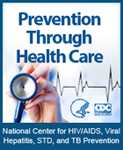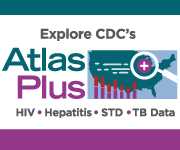World TB Day Statement from Dr. Philip LoBue
CDC Statement on World TB Day 2017- March 23, 2017
Resources
Statement by Philip LoBue, M.D.,
Director of the Division of Tuberculosis Elimination
at the National Center for HIV/AIDS Viral Hepatitis, STD and TB Prevention, CDC
Every year, World TB Day serves as an important reminder not only of how far we’ve come in the fight against tuberculosis (TB), but how far we still have to go. Today, CDC published the latest data on how many persons in the United States were afflicted by TB in the past year. The findings suggest that unless progress against TB is accelerated in the United States, we will not be able to eliminate TB in the near future, or even this century.
Preliminary 2016 TB surveillance data indicate that despite slight declines in U.S. TB cases and rates since 2015 (a drop of 2.7 percent in reported cases and 3.4 percent in case rate per 100,000 people), the TB incidence rate remains at levels 29 times higher than the TB-elimination target rate.
TB cases continue to occur in every state and region in the United States. The disease can strike a heavy physical, emotional, and financial blow to people and families affected by the disease. Analyses suggest that eliminating TB will require a dual approach: strengthening existing TB programs/systems to diagnose and treat active TB disease, and intensifying efforts to identify and treat latent TB infection among those who are infected with TB bacteria but are not yet sick.
Today, U.S. TB control efforts focus largely on quickly identifying and treating those who are sick with active TB disease to cure and prevent ongoing transmission. Over the last 20 years alone, health departments and CDC TB control efforts have prevented as many as 300,000 people from developing TB disease, saving more than $6 billion in costs.
Given the severity of this disease, it is essential that we maintain and strengthen TB health programs that prevent ongoing person-to-person transmission. Unfortunately, these efforts alone will not be sufficient. More than 85 percent of U.S. TB cases are associated with reactivation of latent TB infection, often acquired years earlier. It’s estimated there are up to 13 million people living in the U.S. with latent TB infection; and while they do not have symptoms and cannot spread the bacteria to others, 5 to 10 percent of them will eventually develop active TB disease if left untreated.
The good news is that we have more tools than ever to rapidly diagnose and treat latent TB infection and prevent the development of TB disease. With better diagnostic tests, shorter treatments, and new guidelines to assist physicians in testing, the United States has a greater opportunity than ever before to eliminate TB in this country.
Through this dual approach to combating latent TB infection and TB disease, we can reduce not only unnecessary suffering, but also substantial costs. Treating a single person for drug-susceptible TB disease costs about $18,000 -- some 36 times more than the $500 it costs to proactively treat a person for latent TB infection. The cost for treating drug-resistant TB disease is even higher, ranging from $154,000 to $494,000 – which is 300 to nearly 1,000 times the cost of treatment for latent TB infection.
Achieving our national goal for TB elimination will require not only maximizing all available tools, but also continuing to engage global TB partners to reduce TB abroad. These partnerships will be essential given the greater risk of TB among individuals in the U.S. who travel to or were born in countries that lack comparable TB control systems.
To eliminate TB in the United States, public health systems and private providers must work together. Because current health department staffing is not sufficient to address the large number of people at risk for latent TB infection, we must broaden the responsibility and engage healthcare providers serving populations most likely to be susceptible to move from latent TB infection to active TB disease. This includes people with weakened immune systems, people with increased exposure to TB due to being born in or traveling to countries with high TB prevalence, those who smoke and are exposed to second hand smoke, and those who have lived in group settings such as long-term care facilities, homeless shelters, or correctional facilities.
TB is a preventable and curable disease. We’ve come a long way in fighting the disease in the past 135 years, but in order to reach TB elimination, we must intensify our efforts and implement a dual approach to put an end to a disease that has plagued mankind for thousands of years.
Media Contact
National Center for HIV/AIDS, Viral Hepatitis, STD, and TB Prevention
News Media Line - (404) 639-8895
NCHHSTPMediaTeam@cdc.gov
###
- Page last reviewed: March 23, 2017
- Page last updated: March 23, 2017
- Content source:


 ShareCompartir
ShareCompartir

